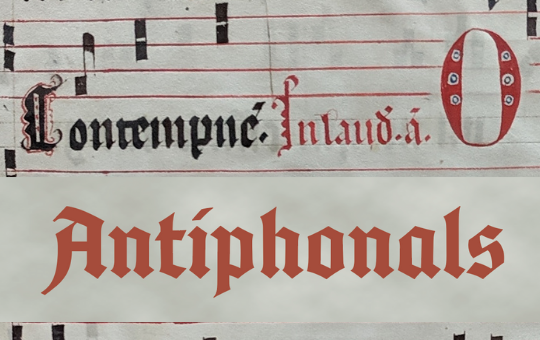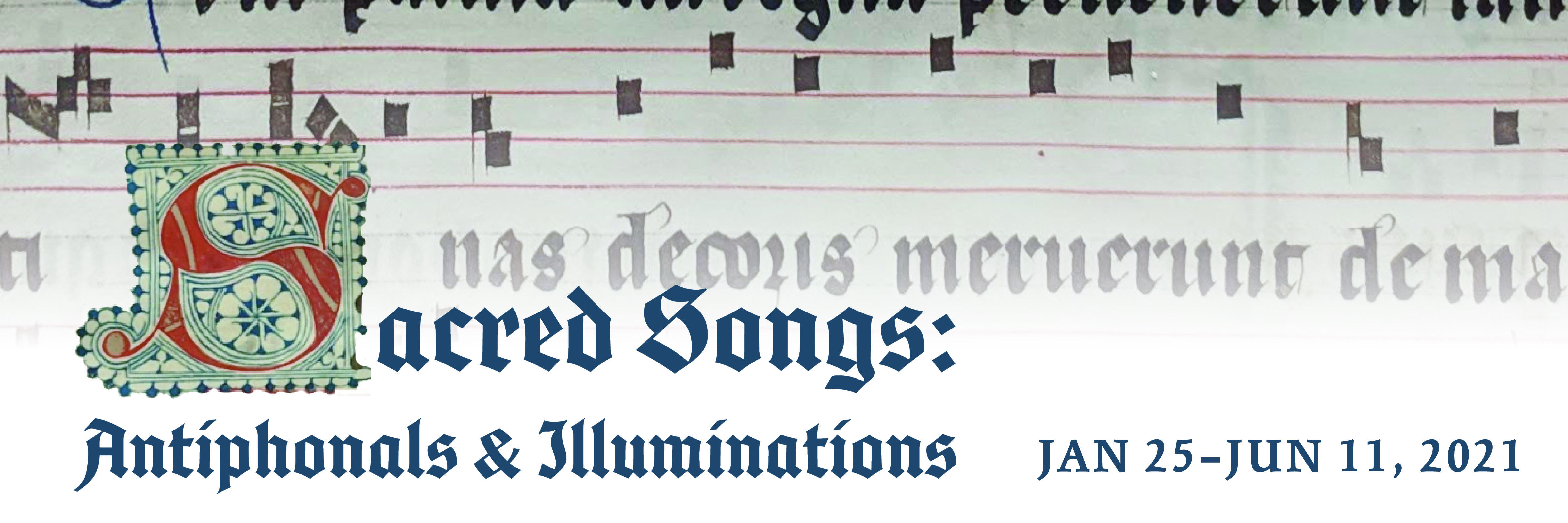
An antiphonal is a collection of liturgical texts that were sung as part of daily devotion and worship in monasteries and convents. Most antiphons were written in Latin, the official language of the Catholic Church from its beginnings until the mid-20th century. Today, songs for Mass are sung in the vernacular (everyday language), while some Catholic churches have returned to the Latin. The word antiphon, from the Latin antiphona, describes words sung as a response. As early as the 6th century, European church spaces accommodated separate choirs for responsive singing. Antiphons referenced biblical stories or themes surrounding various holidays and festivals according to the Catholic Church’s liturgical calendar.
Early antiphonal music featured notations that are still incorporated today, such as staff lines, notes and clefs. These early notes were called neumes and indicated the inflection of the pitches as well as the order of notes in a universal language for musicians. The musical notation system made it easier to share chants among different sects of the Catholic Church.
To accommodate groups of four or more singers, an antiphonal was larger than a standard book so that the text could easily be read from a raised lectern. Some antiphonals were embellished with illuminations, such as initial letters introducing passages as well as fully developed images.
